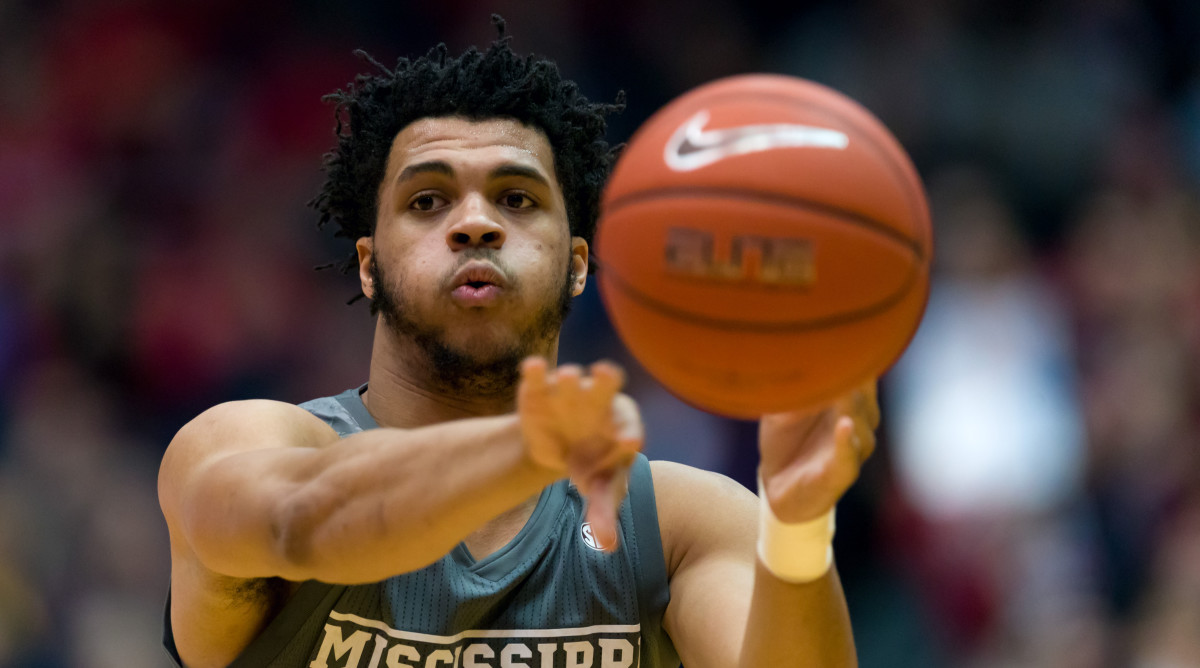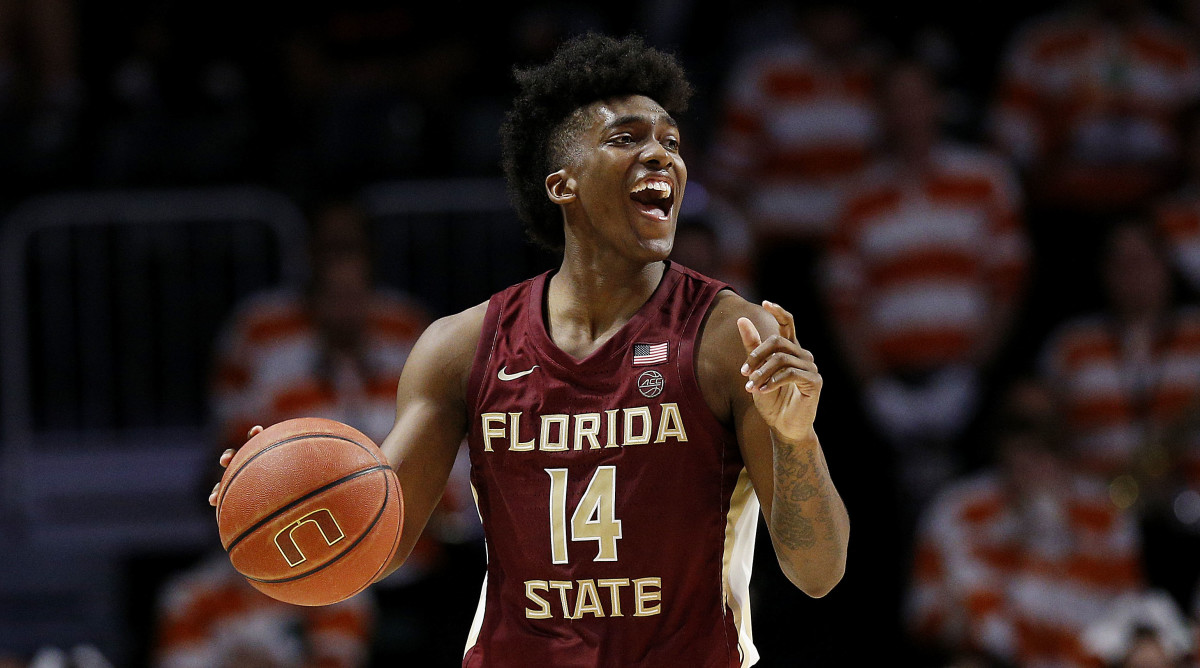NBA Draft Sleepers Who Stood Out at Portsmouth Invitational

Portsmouth, Va. — The Crossover’s Front Office spent three days in Virginia at the Portsmouth Invitational, where an enormous NBA contingent gathers annually to evaluate the top college seniors in the country. While top decision-makers generally don’t flock to the PIT each year, the event is pivotal in earning players workout opportunities, and can be a terrific platform for sleepers to emerge. Case in point, Spurs guard Derrick White, who won MVP at Portsmouth two years ago, parlayed it into a combine invitation, played well in Chicago and was drafted in the late first round, and is presently lighting up the playoffs. Granted, his case is an extreme example, but the search for diamonds in the rough makes the trip to the PIT worthwhile for scouts on an annual basis.
It’s worth noting that a number of top seniors turned down invitations to Portsmouth, likely hoping for invitations to the new G-League Elite Camp (May 13–14), part of which is ostensibly functioning as a precursor to the draft combine (May 15–19). For context, the top 40 players, regardless of class, as voted on by teams earn outright combine invites. The next 40 vote-getters will earn invitations to the Elite Camp. The top performers there will earn an opportunity to participate in the combine later that week.
In the past, the five top players at Portsmouth earned direct invitations to the combine, but with the Elite Camp now in place, it’s unclear which group it’ll filter into in May. There were also some murmurs about Portsmouth’s ability to maintain relevance, noting that the new event could have a greater pull for more established prospects (for example, Wisconsin’s Ethan Happ turned it down). But in the end, the level of talent and competitiveness of play at the PIT remained high, and a number of players set themselves apart over the course of four days. Below are the ones who stood out the most:

Quinndary Weatherspoon, G, Mississippi State
Mississippi State’s do-it-all guard looked like perhaps the top all-around talent at the tournament. Weatherspoon is a playmaker on both ends, with strong instincts that keep him around the ball at all times. He measured well at 6’4” in shoes with a 6’9” wingspan, with enough size and shooting ability (he shot a tick under 40% from three this season) to play as an off guard. While Weatherspoon had a tendency to be overly trigger-happy at times in college, he looked committed to making the right play and consistently made good decisions with the ball in his hands. Capable of bringing the ball up, moving it around the perimeter, and with no glaring holes in his skill set, it’s easy to see Weatherspoon’s game translating to the NBA in an E’Twaun Moore sense. He should be viewed as a draftable player, and would be a priority free-agent option for teams should he go unselected. Weatherspoon will be deserving of a spot in either of the Chicago combines in May.
Justin Robinson, PG, Virginia Tech
After missing a chunk of Virginia Tech’s season with an ankle injury and returning for a three-game NCAA tournament run, Robinson looked healthy and in shape at Portsmouth and was the top point guard in attendance in the eyes of most observers. He hit a game-winning three on the tournament’s first night and displayed his usual levels of poise and toughness. Robinson is just 6’1” in shoes and doesn’t stand out physically, but he looked bouncy, quick off the dribble and showcased a keen ability to let plays develop and delivered accurate passes with both hands. Scouts are still a bit skeptical of his jumper, which is a bit hard and flat, but he improved his three-point mark each year in college and finished at a career 38.5% from deep, a capable mark. Robinson won’t turn 22 until October, making him the same age as many juniors, and played his way closer to draftability with a good week.
Chris Clemons, PG, Campbell
Although it was an up-and-down week for college basketball’s leading scorer, Clemons ended up winning tournament MVP after his team won the championship. When the Campbell star is on, he’s a uniquely gifted talent to witness, and if he were a bit taller, he’d probably be a no-brainer in terms of draftability. He stands just under 5’10” in shoes, but is an explosive athlete who is capable of playing around the rim when given space for takeoff. NBA teams are certainly taking Clemons seriously, and while his playmaking and defense are works in progress, he did put in some work in both of those areas. He’s likely to end up on a two-way contract next season, with his likely best-case scenario being an eventual roster spot as someone’s third point guard.
DaQuan Jeffries, F, Tulsa
Jeffries certainly benefited from the exposure this week, showcasing his strong build, powerful leaping ability and ability to knock down set shots on a number of occasions. Jeffries also had the luck of playing on a team with Robinson and Weatherspoon, leading to some favorable scoring opportunities. He lacks creativity off the dribble and is best suited as a three, or a four in smaller lineups, but he’s a capable defender and above-average athlete with the capacity to serve as a utility player who blends lineups. He turns 22 in August, and was one of the more projectable role players in attendance.
Marial Shayok, G/F, Iowa State
Set to turn 24 in July, Shayok more or less is what he is, but the Iowa State scorer was one of the few players at Portsmouth boasting a legitimately bankable NBA skill. He’s a terrific catch-and-shoot player with natural instincts getting to his jumper off the dribble. At 6’5” in shoes with a 7-foot wingspan, he has the right type of measurables to fit in on the wing. Shayok had a terrific 37-point performance on Thursday, but followed it up with a 1-of-12 shooting day and didn’t make a three-pointer the rest of the way. This is more or less what he’s been all season, and his streakiness and tendency to hunt shots may not play up all that well. Still, he’s someone teams will want to bring in to audition for a bench spot. Shayok seems like a natural candidate for a two-way contract, and has a chance to get drafted.

Terance Mann, G/F, Florida State
Mann was afforded the opportunity to showcase a breadth of skills that weren’t always obvious at Florida State, and won over some scouts with his above-average passing ability and tough-minded approach on defense. He’s a much better live-dribble player than he gets credit for and is fast with the ball in his hands. While you can’t quite stick him at point guard, his well-rounded game and secondary playmaking offer a good bit of intrigue. At 6’7”, Mann’s versatility should make him an impact player in the G League as a starting point. His swing skill will be his jumper—he shot 39% on 77 three-point attempts this season, but had some bad misses at Portsmouth and has never been a volume threat from outside. If a team can help him figure that out, Mann may have a pathway to an NBA role.
Zach Hankins, C, Xavier
Of all the bigs in attendance, Hankins seemed to figure his role out the fastest, focused on sprinting the floor, showing for easy baskets and communicating defensively. After a slow start to the season at Xavier (he was the Division II Player of the Year as a junior at Ferris State before transferring), the 6'10" Hankins finished the season with an impressive PER of 29.6 (according to ESPN’s Hollinger stats), producing at a level just behind Ja Morant and Rui Hachimura and ahead of draftable centers like Daniel Gafford and Bruno Fernando. Without a consistent jumper or substantial leaping ability, Hankins remains an NBA long shot, but he likely earned himself some workouts with a strong week, and his productivity will help his case with analytically minded teams. He’s as deep a sleeper as you could find at Portsmouth, and it’s not out of the question he could end up on a two-way next season.
